Such is written on the signboard of the city’s two main gates, Donginmun (동인문, 東仁門) and Seouimun (서의문, 西義門), which welcome visitors to the ancient city. In fact, many Confucian heirlooms and monuments can be found in the city and Confucianism has been at the center of Korean spiritual traditions since the Joseon Dynasty (1392-1910).
The most noticeable Confucian artifacts in the city are the seowon (書院). Seowon are local private Confucian academies built since mid-Joseon times. These schools are designed to accommodate students who study the Confucian classics and to worship the renowned Confucian scholars. The best-known Confucian academies in Andong are the Dosan seowon (陶山書院) and the Byeongsan seowon (屛山書院).
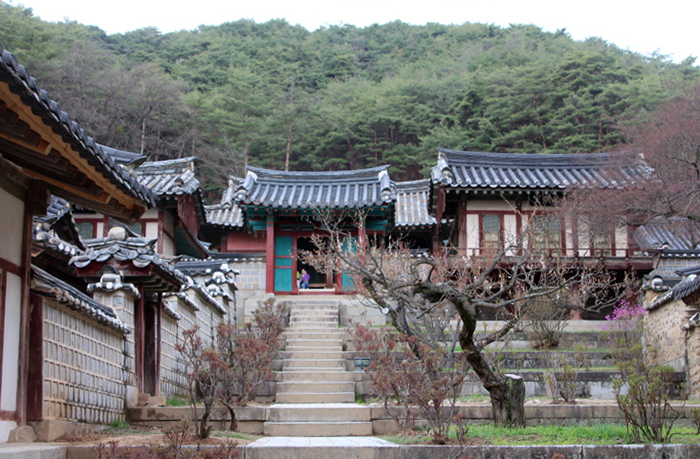
Located in Dosan-myeon in Andong-si City, the Dosan seowon was built in 1574 in commemoration of Yi Hwang, one of the most renowned Confucian Joseon scholars, under the orders of King Seonjo (1552-1608).
The Dosan seowon was established in 1574 in order to pay tribute to Yi Hwang (이황, 李滉) (1502-1571), a leading Confucian scholar of Joseon times also known by the pen name Toegye (퇴계, 退溪). The Dosan seowon originated from the Dosan seodang lecture hall where Yi Hwang taught his students after he retired from government service in 1561.
Yi emphasized the importance of learning for self-cultivation (위기지학, 爲己之學), the main goal of Neo-Confucianism, a leading academic school within Confucianism. He also emphasized learning and repeating what one has learned in due time (학이시습, 學而時習). The "Annals of the Joseon Dynasty," or the "Joseon Wangjo Sillok" (조선왕조실록, 朝鮮王朝實錄), greatly valued Yi's personality and the depth of his academic studies by saying, “Scholars all looked up to him, like a huge mountain, as high as the Great Bear." This was recorded in the annals on Feb. 15, 1566, the 21st year of the reign of King Myeongjong (1534-1567).
Many parts of the Dosan seowon reflect these beliefs of Yi Hwang, a man who pursued academic learning solely for self-cultivation and who put his learning into practice in his day-to-day life. The academy complex is built in a humble and simple manner, suitable for seonbi, or honorable Confucian scholars.
Yi Hwang also named a well close to the main gate of the academy, calling it the Yeoljeong (열정, 列井). He named the well so as to impart the lesson that, as one drinks the inexhaustible spring water of knowledge from a bucket, so one should discipline oneself by making unceasing efforts. For another well at the academy, he named it Mongcheon (몽천, 蒙泉), which means enlightening students and leading them along the right way. By naming simple wells thusly, he put the lessons of learning for self-discipline into everyday objects. Yi even designed the dormitory for students, the Nongunjeongsa (농운정사, 瀧雲精舍), in the shape of the Chinese character gong (공, 工), meaning "to study," in the wish that his students would be able to concentrate on studying. He wrote many poems about the natural beauty of the surrounding mountain and river around the academy, and of the importance of self-cultivation.
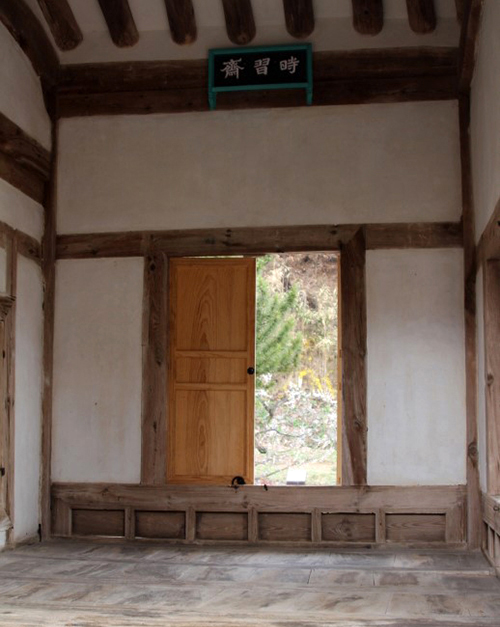
The Siseupjae (시습재, 時習齋) is a wooden floored room in the east wing of the Nongunjeongsa dormitory at the Dosan seowon. It was a studying room for Yi Hwang’s students.
The Byeongsan seowon is another well-known Confucian academy, this one designed to pay tribute to Ryu Seong-ryong (류성룡, 柳成龍) (1542-1607) whose pen name is Seoae (서애, 西厓). This Confucian school was originally built as the Pungsan seodang lecture hall by Ryu Seong-ryong for the Pungsan Ryu clan. Only later did it move to Byeongsan. After the passing of Ryu Seong-ryong himself, his descendants and followers built the Jondeoksa (존덕사, 尊德祠) shrine to house his tablet. In 1863, King Cheoljong (1831-1863) bestowed a hanging board on this seowon inscribed in the king’s own hand with the name "Byeongsan seowon" (병산서원, 屛山書院), making it one of the royally chartered private academies.
Ryu Seong-ryong became Yi Hwang’s student at the age of 21. After he began his public career, he held a series of influential posts. Ryu went through to the top post and became the yeonguijeong (영의정, 領議政) during the Imjinwaeran (임진왜란, 壬辰倭亂, Battles in the Year of Imjin, 1592-1598). Ryu was a scholar and administrator who followed the academic beliefs of Yi Hwang by putting Confucian learning into practice in his day-to-day life.
Right before he died, Ryu left a well-known will to his descendants. It said, “Nothing is more important than filial piety and loyalty.” His will itself is considered to embody the true lessons of Confucianism, which highlights the values of loyalty (충, 忠), filial piety (효, 孝), rites (예, 禮) and righteousness (의, 義). Among his many books, the best-known is "Jingbirok" (징비록, 懲毖錄), in which Ryu wrote about the Imjin War so that Joseon would be able to learn lessons from the past and prevent a recurrence of such events in the future.
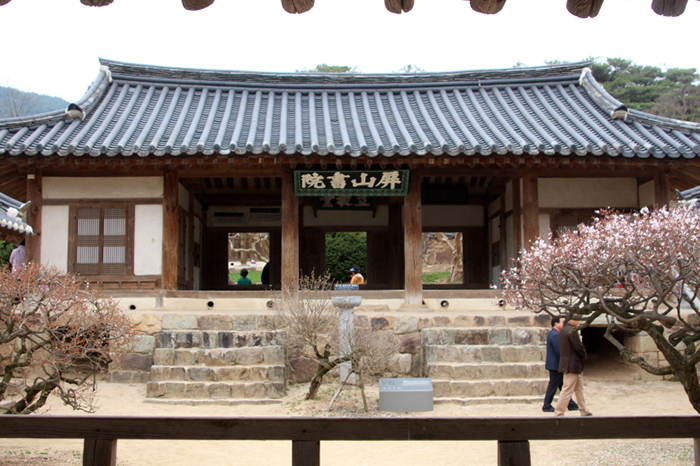
The Byeongsan seowon houses the tablet of Ryu Seong-ryong.
The Byeongsan seowon is also composed of the basic elements of a seowon. One of its characteristics is the asymmetric construction of its two dormitories to the east and the west in order to receive more sunlight in the morning and in the evening.
Another unique feature of the Byeongsan seowon is its architectural beauty, which is in harmony with the surrounding natural scenery. If you sit on the floor of the main hall, you can see a tall tower called the Mandaeru (만대루, 晩對樓) that can accommodate more than 200 people. On the tower, one can appreciate the picturesque beauty of the surrounding countryside. The stiff cliffs of Byeongsan Mountain act like a folding screen and the Nakdonggang River runs peacefully along.
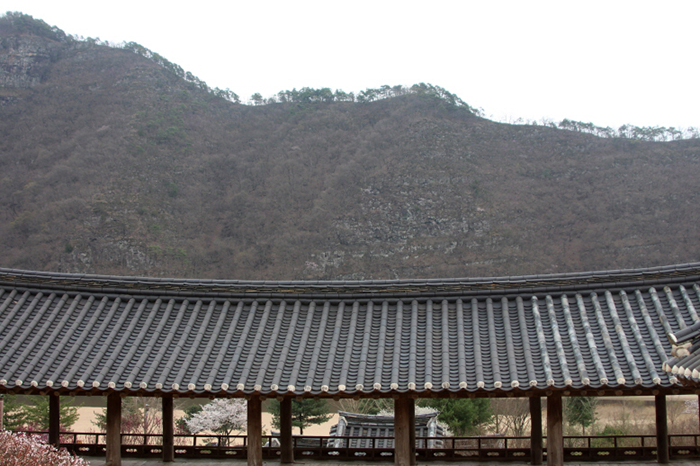
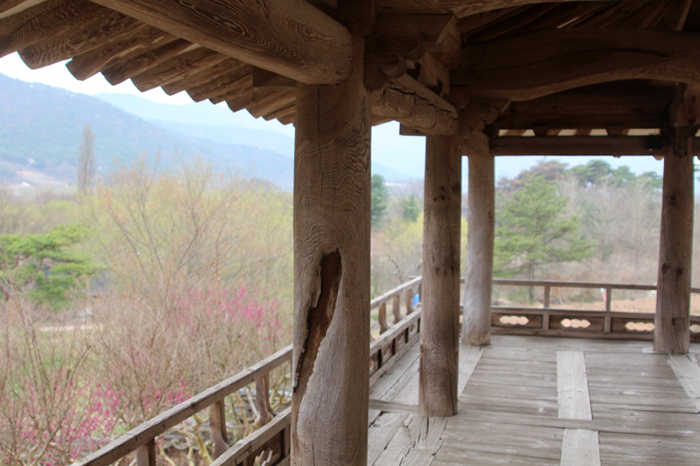
The Mandaeru Tower is in perfect harmony with the natural surroundings of the mountain and the river. Byeongsan Mountain surrounds the Mandaeru, and the inside has wooden floors.
Ryu Seong-ryong’s faith is also well reflected in the Chunghyodang House (충효당, 忠孝堂) in Hahoe Village. The name Chunghyodang is derived from Ryu’s own words, who always emphasized two prime virtues: loyalty to the country and filial piety to one's parents. He returned to his hometown in Pungsan to spend the rest of his life there after retiring from public service. He died in a small thatched house. After his passing, Ryu’s descendants and followers built Chunghyodang House in memory of his learning and virtue.
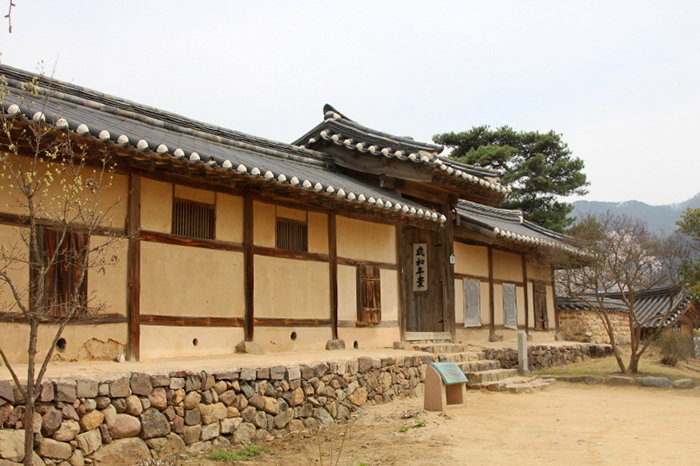
Chunghyodang House was built by descendants and followers of Ryu Seong-ryong and to commemorate his academic learning and virtue.
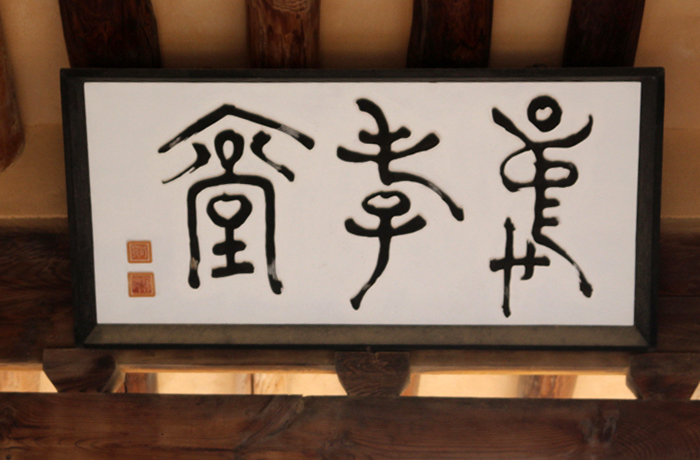
The headboard at Chunghyodang House highlights the teachings of Ryu Seong-ryong who highly emphasized loyalty and filial piety.
Other Confucian heritage locations in Andong include the Historic Site of Ocheon, in Waryong-myeon. This is a village built by Kim Hyo-ro (김효로, 金孝虜) (1454-1534) whose pen name was Nongsu (농수, 聾叟). He was the founder of the Yean branch of the Gwangsan Kim (Gim) clan and a scholar of early Joseon times. This village was originally built in Yean but was later moved to the Waryong area.
Toegye Yi Hwang praised Kim Hyo-ro's depth of academic learning, saying that, “Kim Hyo-ro was too eager to learn by himself, to take care in performing the ancestral rites, to show filial piety toward his parents and to show love for his siblings and children. He had an excellent attitude and was well-behaved. ”
Kim’s two sons -- Yeon and Su -- served as loyal court officiaks to King Jungjong (1488-1544). Descendants in the Gwangsan Kim clan thrived. Some of them put Confucian learning into practice by raising an army in the cause of loyalty during the Imjin War. This village is also known as Gunjari (군자리, 君子里), or the Andong Gunja Village, as it is believed to have been home to five Confucian sages, or gunja (군자, 君子).
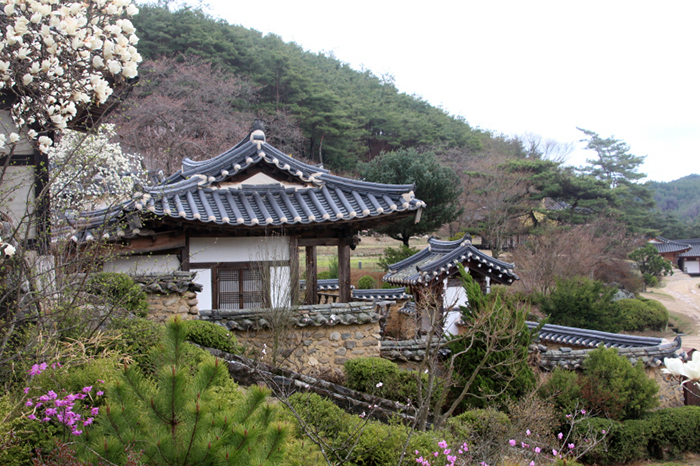
The Historic Site of Ocheon in Waryong-myeon was built by Kim Hyo-ro, the founder of the Yean branch of the Gwangsan Kim clan.
Noticeable features of the Historic Site of Ocheon include the headboards hanging on the buildings, and poems written there. One such is the Takcheongjeong, a pavilion adjacent to a house built by Kim Yu (김유, 金綏) (1491-1555) in 1514, the 36th year of King Jungjong’s reign. The headboard was carved by noted calligrapher Han Ho (한호, 韓濩) (1543-1605). Renowned Confucian scholars such as Yi Hwang wrote poems inside the pavilion.
Another must-see building is the Hujodang House (후조당, 後彫堂) built by Kim Bu-Pil (김부필, 金富弼) (1516-1577), a court official under the reign of King Seonjo. The building is named after his pen name, Hujodang. The headboard of this building is hand-written by Yi Hwang himself.
Many of the head households for the clans that made up aristocratic Joseon society can be found in Andong. These include the Jinbo Yi clan of Yi Hwang, the Pungsan Ryu clan of Ryu Seomg-ryong, the Gwangsan Kim clans, and the Andong Kim and Gwon clans. Each head of each clan owned his own storage area for books and woodblocks. More than 65,000 woodblock prints of these publications still remain today. These Confucian printing woodblocks are all enlisted as UNESCO Memory of the World items.
You can learn more about all such clan records and the history of Confucianism itself at the Advanced Center for Korean Studies.
By Yoon Sojung
Korea.net Staff Writer
Photos: Wi Tack-whan
arete@korea.kr
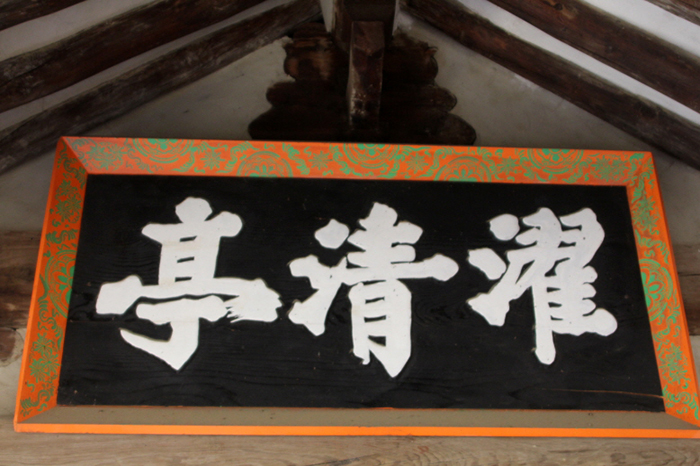
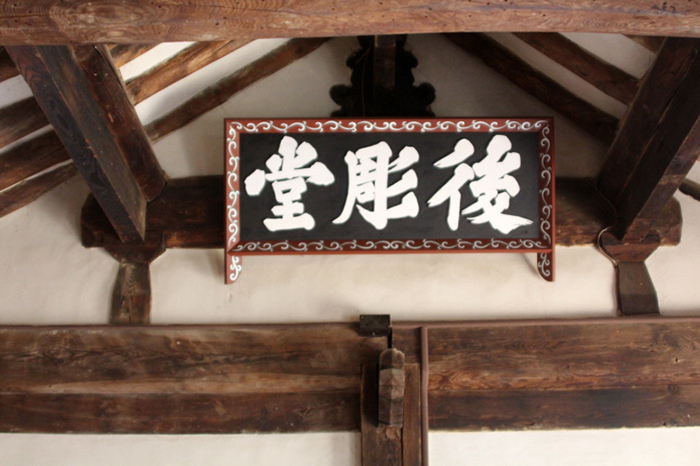
Headboards at the Takcheongjeong Pavilion (top) and the Hujodang House are written by well-known Joseon calligrapher Han Ho and Yi Hwang, respectively.